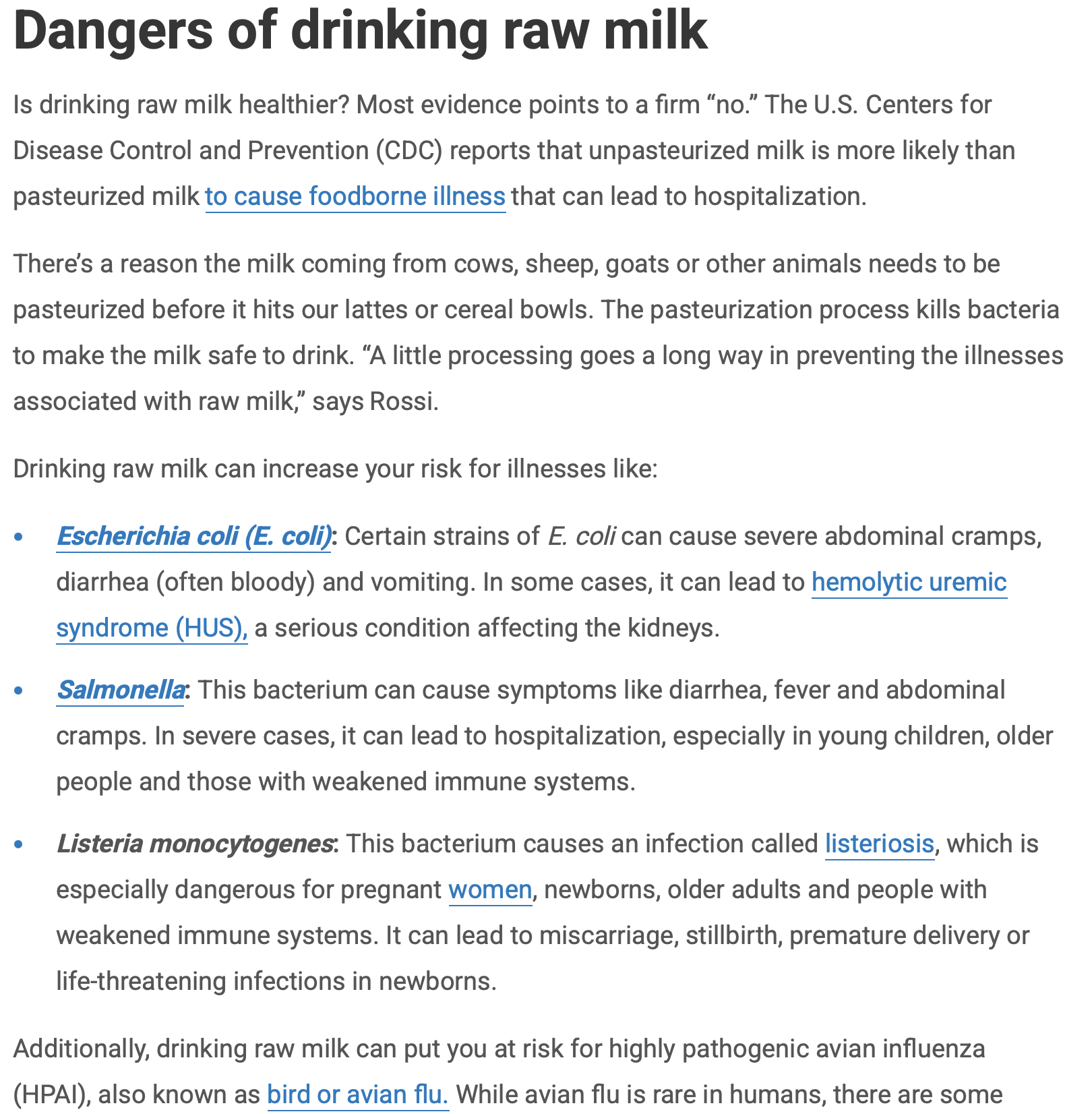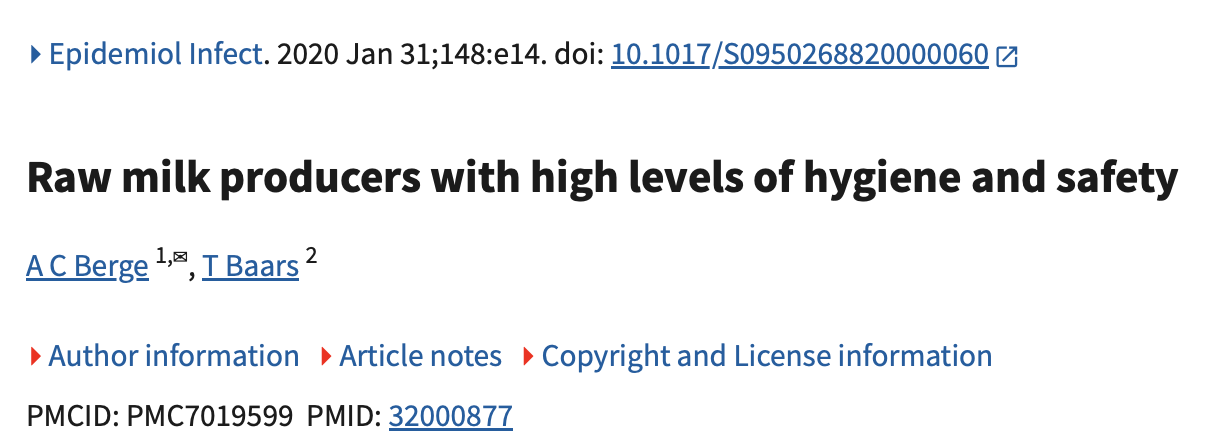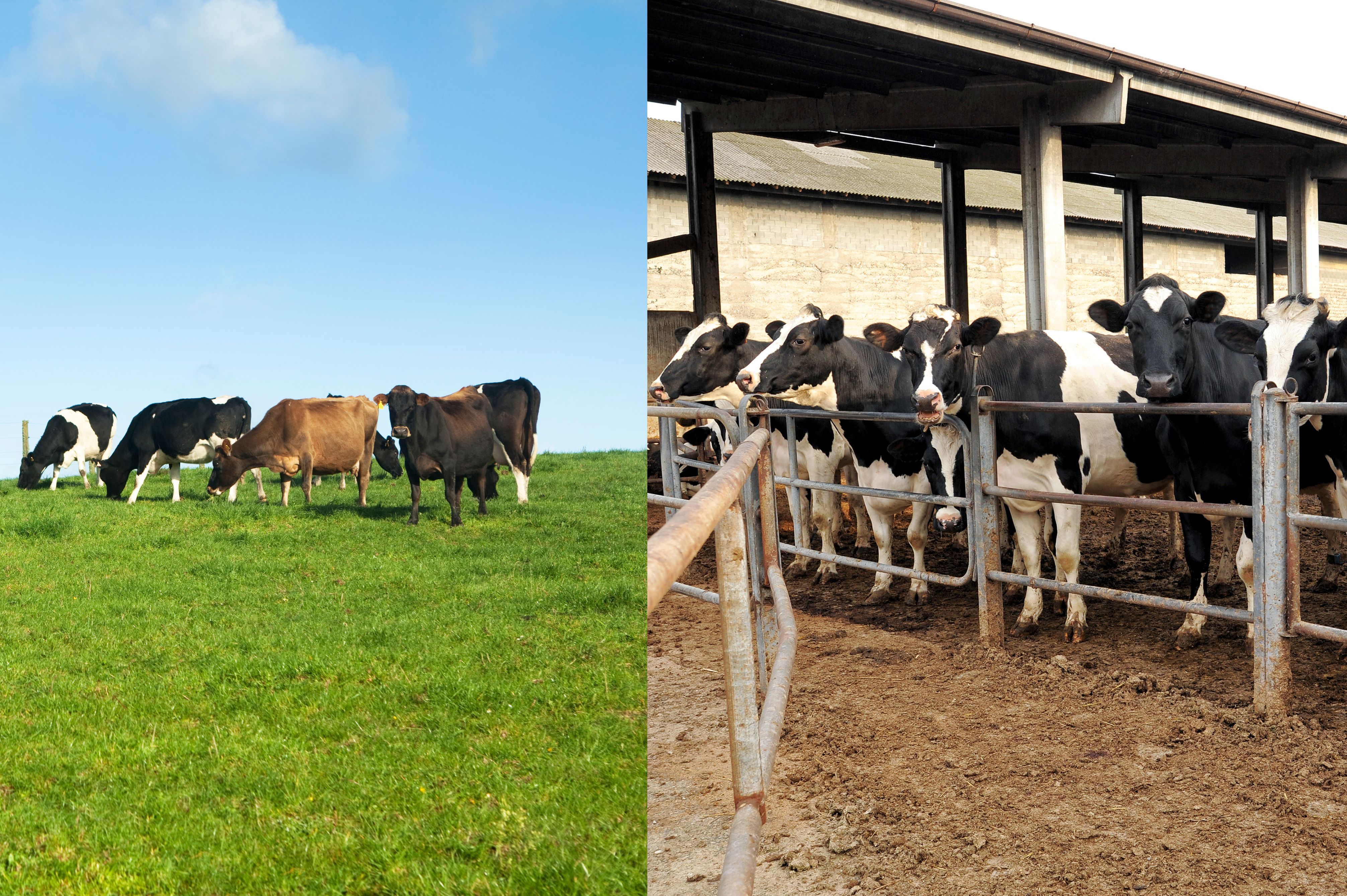Is Raw Milk Safe? Understanding the Truth Behind Raw vs. Pasteurized Dairy
Mar 23, 2025
In the modern world, views on raw dairy seem to be on opposite sides of the spectrum. On one side, people claim it’s the savior to their health, and on the other, it’s labeled as extremely dangerous, so dangerous that one sip could kill you!
Honestly, I don’t mind if you don’t drink raw dairy. That’s not the point here. What I want to do is set the record straight and clear up the confusion. Because these “raw dairy is dangerous” messages push us further and further away from real, natural food production. They encourage us to accept industrialization, mass production, and food made in a lab -- ultimately leading us into a centralized food system that doesn’t prioritize our health or the health of the planet.
Let’s talk about why that matters, and how we can reclaim a more balanced approach to the foods we consume.

Raw milk is a superior product compared to pasteurized milk. It contains higher levels of micronutrients, natural enzymes, beneficial bacteria and other bioactive compounds that support overall health. (More about why raw milk is healthier in this blog post).
Despite what mainstream messaging says, it’s essential to understand that raw milk is not inherently dangerous. This narrative has been perpetuated by a variety of sources, including government regulations and the dairy industry, but it’s important to recognize that this is not a reflection of the raw milk itself, it’s a misunderstanding of how contamination can actually occur.
Here is the common copy, paste, repeat warning labels from government agencies that dominate google searches, this one from the Cleveland Health Clinic:

There have been zero cases of humans getting bird flu from drinking raw milk.
Raw milk only becomes unsafe if it is contaminated after it leaves the cow during milking or bottling. This means that the actual risk isn’t from the raw milk itself, but from poor handling practices during the milking and post-milking processes. If raw milk isn’t handled with proper care, such as exposure to bacteria in unclean environments or not being refrigerated quickly enough, it can become contaminated. This highlights the importance of maintaining sanitary milking conditions and good hygiene throughout the process.
The key to understanding raw milk safety lies in how it is produced and handled. When it’s done right, on small, clean farms where animals are healthy and treated well, living in natural conditions, and handled with care, raw milk can be just as safe, if not safer, than pasteurized milk.
And this isn’t just speculation, it’s science. Raw milk can be produced and provided to consumers safely. In fact, a 2020 research paper analyzing farming practices for safe raw milk production states, “The overall results indicate that raw milk can be produced with a high level of hygiene and safety in various systems.” (r)

But why is there so much fear surrounding raw milk? Unfortunately, it’s part of a larger narrative that encourages us to fear nature, natural biological processes, and the foods that come from them. This fear benefits the industrialized, centralized food system. There’s a concerted effort to push us away from traditional, time-tested methods of food production and instead rely on industrialized, technological solutions like pasteurized milk, lab-made foods, and synthetic supplements.
This fear-driven mindset distances us from the natural world and creates reliance on technologies and systems that prioritize mass production, efficiency, and profit over quality, sustainability, and health. In reality, when managed with care and respect for the natural process, raw milk is a far more nutrient-dense and health-supporting food than its processed counterparts. The fear of raw milk, then, is not about the inherent risks of the product itself, but about keeping people dependent on the industrial food system.
By emphasizing proper handling practices and educating people on the true nature of raw milk, we can shift the narrative and reclaim our relationship with real, whole foods. It’s time we start challenging the idea that nature is dangerous and start seeing the benefits of returning to the roots of how our food is produced, directly from the earth, directly from the farm, not a lab.
The History and Purpose of Pasteurization
Pasteurization was introduced around 100 years ago, yet humans have been consuming raw dairy products for over 7,000 years. So, how did we survive before pasteurization? Was there a shift or reason why pasteurization was introduced?
Traditional dairy farms sustained generations. Cows, goats, and sheep lived outside on pasture, fed a natural, pasture-based diet. As cities grew, the demand for fresh milk outpaced local farm production, leading to the creation of “swill milk” dairies and urbanization.
Cows were moved from pastures and into the cities.
These operations, often located next to whiskey distilleries, fed cows distillery waste (spent grain, also known as “swill”), rather than proper feed or grass. The poor diet resulted in sick cows and low-quality milk that was watered down and whitened with additives like chalk or plaster. The unsanitary conditions at these urban dairies contributed to outbreaks of diseases such as tuberculosis, brucellosis, and typhoid fever, which led to calls for regulation. This unsanitary milk would not have been safe for consumption, and rightfully so.
When cows are brought from pasture into crowded, unsanitary urban environments, the results are predictable and not good. Rather than addressing the root cause (poor management and unnatural diets), mass pasteurization became a quick-fix solution to make milk “safe” from these sources.
These urban dairies were the early versions of what we now call Confinement Animal Feeding Operations (CAFOs), just on a smaller scale. Cows in these dairies were crammed into filthy, poorly ventilated stables and fed an unnatural diet. As a result, the milk was of low quality and posed serious health risks.
When you remove animals from pasture and stuff them into confinement, of course there will be consequences.
Raw milk from livestock living on pasture, with healthy living conditions and sanitary milking conditions, is safe. In contrast, raw milk from livestock in confinement, living in unsanitary conditions, without access to sunlight or space to express natural instincts, and constantly exposed to waste is not safe. But this confinement setup is not natural.

Unfortunately, most dairy today is produced in these industrialized confinement systems, which is why raw milk from this setup is not safe.
But this farming model shouldn’t be compared to smaller farms that do things differently. Raw milk from small, regenerative farms where animals live on pasture and are milked in clean conditions is not only safe, it’s a true superfood.
The Industrialization of Dairy and Its Impact
As industrialization took over, the dairy system transitioned from traditional, pasture-based methods to large-scale, confinement dairies. By the mid-20th century, several factors accelerated this shift:
- Urbanization & Population Growth – As cities expanded and people moved away from the country, land became too valuable for local dairies, and farms moved further away from consumers. We’ve moved further and further away from our food.
- Government Policies & Subsidies – Large-scale production was incentivized through government subsidies, favoring grain-fed and confinement systems over pasture-based dairies. The ‘go big or go home’ mindset was incentivized to maximize food production while minimizing costs. This mindset has not only sacrificed quality of our dairy products, but it is also reducing the total number of farmers. In 1970, there were 648,000 dairy farms. In 1993, there were 131,509 dairy farms. And today there are 26,290 dairy farms. A reduction in number of dairy farms, and an increase in number of cows at each farm (more CAFOs). The decline from 648,000 dairy farms in 1970 reflects the industry’s shift toward fewer, larger operations focused on mass production and efficiency.
- Technological Advancements – The introduction of mechanized milking, artificial insemination, antibiotics, vaccines, and synthetic fertilizers (which led to a large increase in corn and soy crop production) made it easier to keep cows indoors year-round and boost milk production beyond natural levels.
By the 1970s and 1980s, the push for cheap, mass-produced food resulted in fewer, larger dairies as small, pasture-based farms struggled to compete. Large agribusinesses took over the dairy supply chain through vertical integration, consolidating power and control. This shift also brought a feedlot mentality to dairy farming, with cows being fed grain-based diets, similar to the beef feedlot model, replacing the traditional pasture-based systems. This centralized, industrialized food system proved to be much more profitable for large food corporations and Big Ag.
A key factor in this transformation was government subsidies for mass-produced corn and soy, which fueled the demand for cheap grain. With an excess of grain, animals were confined to feedlots and forced to rely more on grain than on grass. This system allowed for quicker, more efficient production, making it more cost-effective. However, the focus on grain-feeding led to unhealthy, less nutritious food and prioritized profit over animal welfare and environmental health.
Despite the known benefits of traditionally produced, pasture-raised dairy, the industrial model became too entrenched due to economies of scale. CAFOs produced milk cheaply and in mass quantities, making it difficult for small farms to compete. Government policies continued to favor large-scale operations, while pasteurization laws shifted the focus to sterilizing poor-quality milk rather than ensuring the milk itself was clean from the start. On top of that, decades of marketing presented industrial dairy as the “norm,” while raw, pasture-raised dairy was dismissed as dangerous.
This centralized, industrialized food system is a lot more profitable for large food corporations and Big Ag.
This isn’t working
While this model has successfully led to mass production and cheap dairy products, it isn’t working and isn’t serving our health. The corners that are being cut in this production model are coming at the expense of our health.
This industrialized model has succeeded in mass-producing cheap dairy, but it is failing to serve our health. The corners being cut in this production process are directly impacting our well-being.
While dairy was once a foundational part of our diets, pasteurized milk from confinement operations is becoming increasingly intolerable. In recent decades, autoimmune conditions, chronic diseases, food sensitivities, and lactose intolerance have all surged—what was once rare is now commonplace.
Clearly, the current food system is not designed with our health in mind. More and more people are waking up to this reality. The solution lies in returning to traditional farming practices, decentralizing our food system, and supporting small, sustainable farms over large, industrial operations that rely on confinement.
It’s time to challenge the CAFO, industrialized food system model and revive regenerative, pasture-based traditional dairy farming.
Summary
While pasteurization is often credited with reducing milkborne illnesses, its historical role was primarily in addressing unsanitary conditions in early 20th-century urban dairies. This narrative is misleading when applied to traditional dairies, where clean milking practices and healthy, pasture-raised animals make raw milk safe.
The real issue was not raw milk itself, but the poor hygiene and unhealthy livestock found in industrial dairy systems. Small, well-managed dairies have been providing safe raw milk for centuries by focusing on healthy cows, proper sanitation, and clean milking practices.
The milk produced today in industrial operations is vastly different from the milk traditionally produced on small, pasture-based farms. While I wouldn’t recommend drinking raw milk from a CAFO dairy, it’s important to recognize that pasteurization served the needs of mass production rather than quality. Pasteurization was designed to address the challenges of industrial dairy, but it’s unnecessary for well-managed, traditional farming systems that focus on quality and sustainability.
When seeking raw dairy sources for yourself, it is of course essential to assess the living conditions of the livestock and the sanitization and cleaning schedule of the milking equipment and milking parlor. But small-scale, pasture-based dairies doing things the traditional way shouldn’t have to rely on pasteurization because they prioritize healthy animals and clean environments, significantly reducing the risk of harmful bacteria. In these systems, the natural, nutrient-dense properties of milk can be preserved.
It’s time we stop fearing mother nature and natural systems. Instead, we should embrace traditional farming methods that have been around long before industrialized practices took over, fostering a healthier and more sustainable food system.
The information provided in this blog post is for educational purposes only and is not intended as medical advice. Please consult with a healthcare professional before making any changes to your diet or lifestyle.

